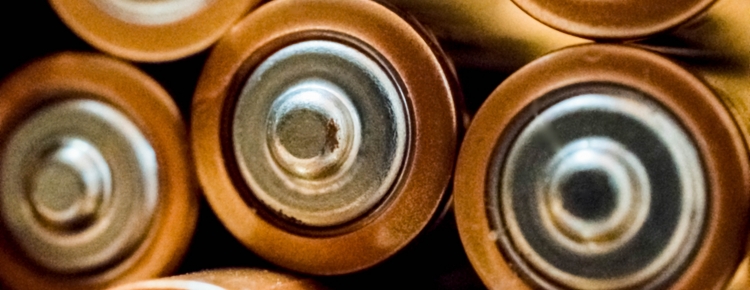
A study conducted by Kelleher Environmental and Call2Recycle in 2017 is shining a spotlight on an issue that, until recently, never existed. in 2017 is shining a spotlight on an issue that, until recently, never existed.
Their research looks across North America to consider the implications of battery disposal, particularly ones embedded in most consumer products. Disposal and recycling measures fall under provincial/state jurisdiction, so regulations enforcing sustainable after-life care of consumer batteries varies greatly; some include extensive lists holding manufacturers, retailers and consumer accountable for proper disposal while others limit regulation to a handful of generic products.
If we go back a couple decades, or into our parents’ youth, there was little reason for such a concern. Only in recent years have we seen such extraordinary, commonplace use of technology in society, and paralleling its rise has been that of the consumer mentality.
If we follow the footprints through time we see the overwhelming expansion of the human population followed inherently by a broadened marketplace as supply and demand ebbed and flowed to meet the desires and requirements of an increasingly dependent culture. As competition increased amongst businesses, brands sought to entice their buyers through innovative means – and arguably the most effective way of doing so is by offering goods at a lower cost. As highly sought-after and expensive possessions became easier to attain, their value decreased and our perception of material belongings changed.
When things are seen as cheap, they are easy to replace.
When people buy lots of cheap things instead of investing and caring for one quality item, a surplus of waste accumulates.
When there is no system in place that sustainably deals with that waste or assigns its responsibility to someone, that waste begins to take up a whole lot of space, invading ecosystems and rippling through species.
This can be said about anything these days – so why the big deal about batteries?
Here’s 4 big reasons why:
- Common ingredients in batteries include: Cadmium, Lithium, Lead (yes, it’s still around – in about 45% of all batteries sold!), Cobalt and Manganese.
These metals are heavy, have a high energy capacity and can be extremely reactive. Some also use a flammable electrolyte and many ingredients require delicate attention when being recycled or disposed of. Such products have detrimental effects on the environment when improperly disposed of or left to “decompose” at their painfully slow rate.
- The initial act of imbedding batteries that aren’t easily removed into products that once functioned with interchangeable parts is in itself an act to financially serve companies by banking on the consumer mentality.
If our phones and laptops had removable batteries, we would need only to replace one piece if the original stopped working. Today, however, it is more common to scrap the whole thing and buy the newest rendition once yours starts to show its age.
- E-waste companies internally track information relating to end-of-life management of products and parts, but they are not required to report this information.
If companies had to abide by a more transparent operational standard and information like end-of-life pathways was made available to the public, it is highly likely (and precedented) that they would strive to achieve higher standards involving collection and reuse.
- This is a relatively new problem. We’re coming across a lot of these now that the long-term effects of manmade materials are beginning to surface and that likely won’t stop anytime soon.
In a world that is progressing faster than we are responding, we need our systems to be just as fluid in order to make the best decision for the whole of our environment, society and economy. By recognizing the potential effects that can arise from loopholes left uncovered in regulations, we can make a conscious effort to respond to such occurrences as they evolve and grow.
It is time for us to take responsibility and hold ourselves and others accountable for the effects our decisions have on the planet. Over-consumption is not a concern reserved solely for the tech industry. It serves as a single example of the dilemma we face on a grand scale. It is becoming a wider-spread notion, and many people are living with greater intention and offering solutions that we would be wise to seek.
So, what kind of solutions exist now if you’re looking to consciously see your old electronics off?
- Your local recycling facility. This is probably the easiest way to ensure you’re doing your part when it comes to recycling any product that is composed of multiple materials or that you’re unsure of.
- Mail-in programs. There are organizations all around the world taking on the responsibility of properly recycling electronics and their many parts. Some programs will send you a box or envelope to put your items in to send off.
- Local collections. Some corporations like Home Depot operate in partnership with organizations to offer battery collection at their locations. Schools often participate in or host similar events as well to collect used electronics, so if you can’t find a nearby solution it often pays to hold onto them until the time comes.
- Take-back programs. Some wholesalers and retailers offer to recycle their products for you at the end of its life, all you have to do is bring it back. This is one of the best examples of accountability at a corporate level and should be taken advantage of!
Until we see our governments address the justified concerns of those seeking sustainable options by putting corrective regulations, legislations and systems into place, it is our responsibility to spread awareness and do what we can.
To find more options and organizations doing their part, visit Intengine.
Tags: electronic recycling, electronic disposal, battery solutions, article, waste management
